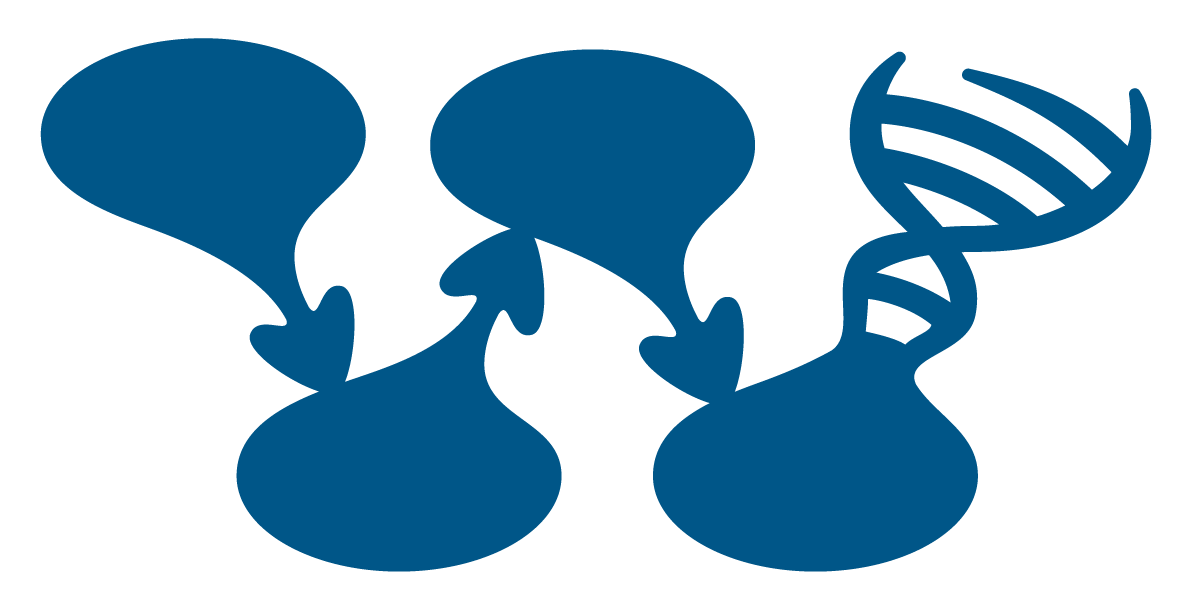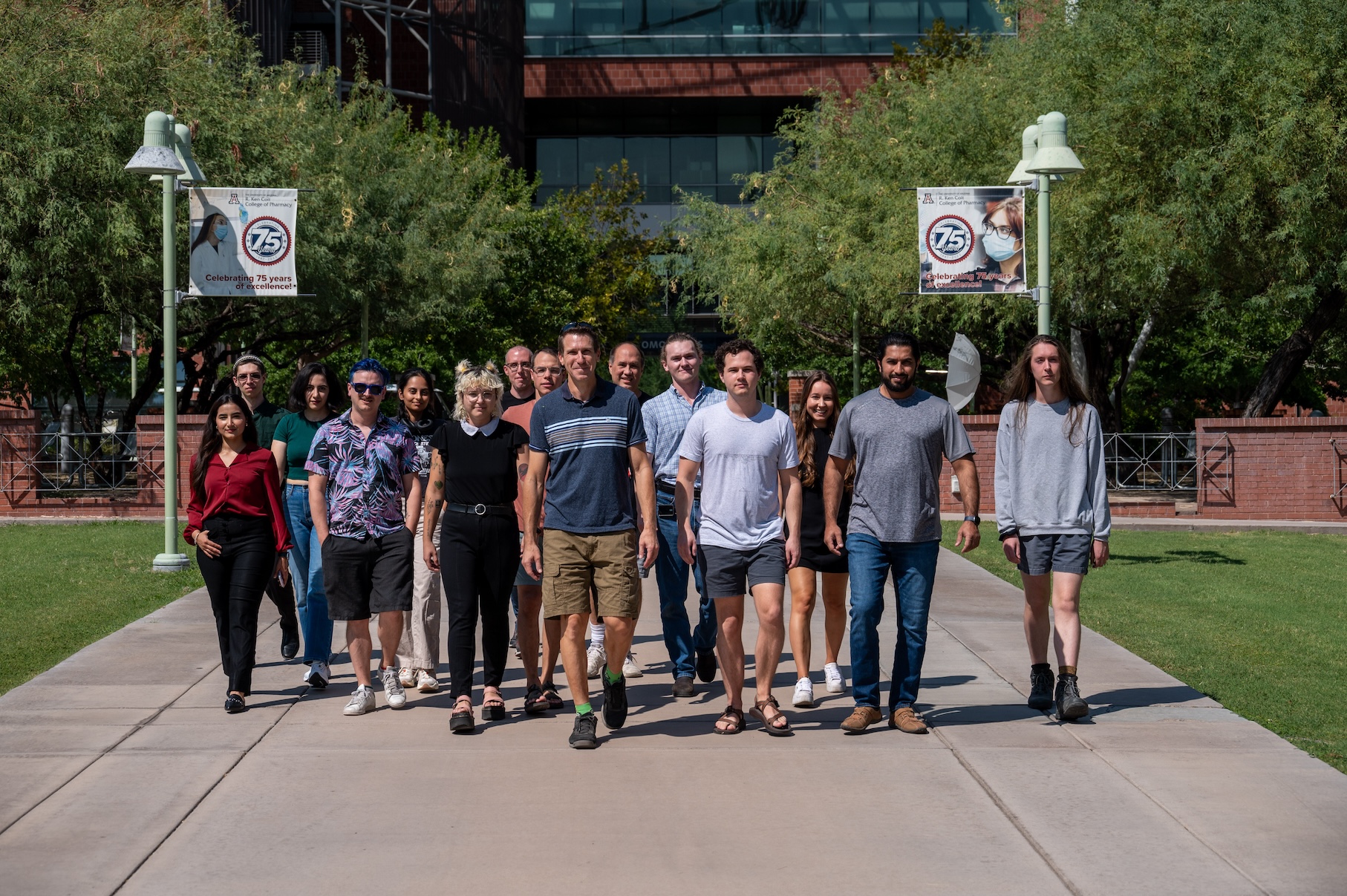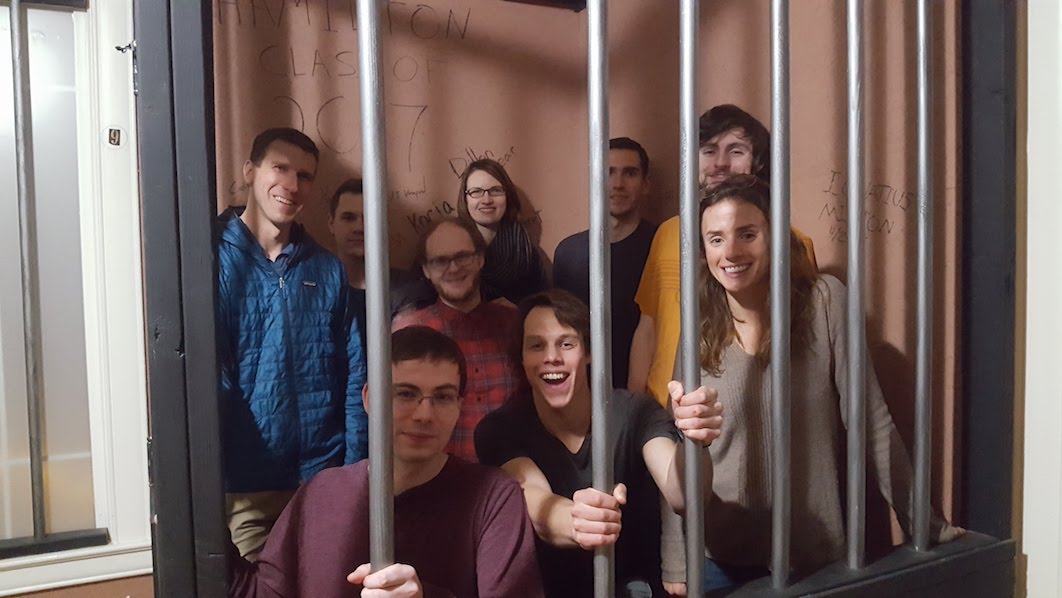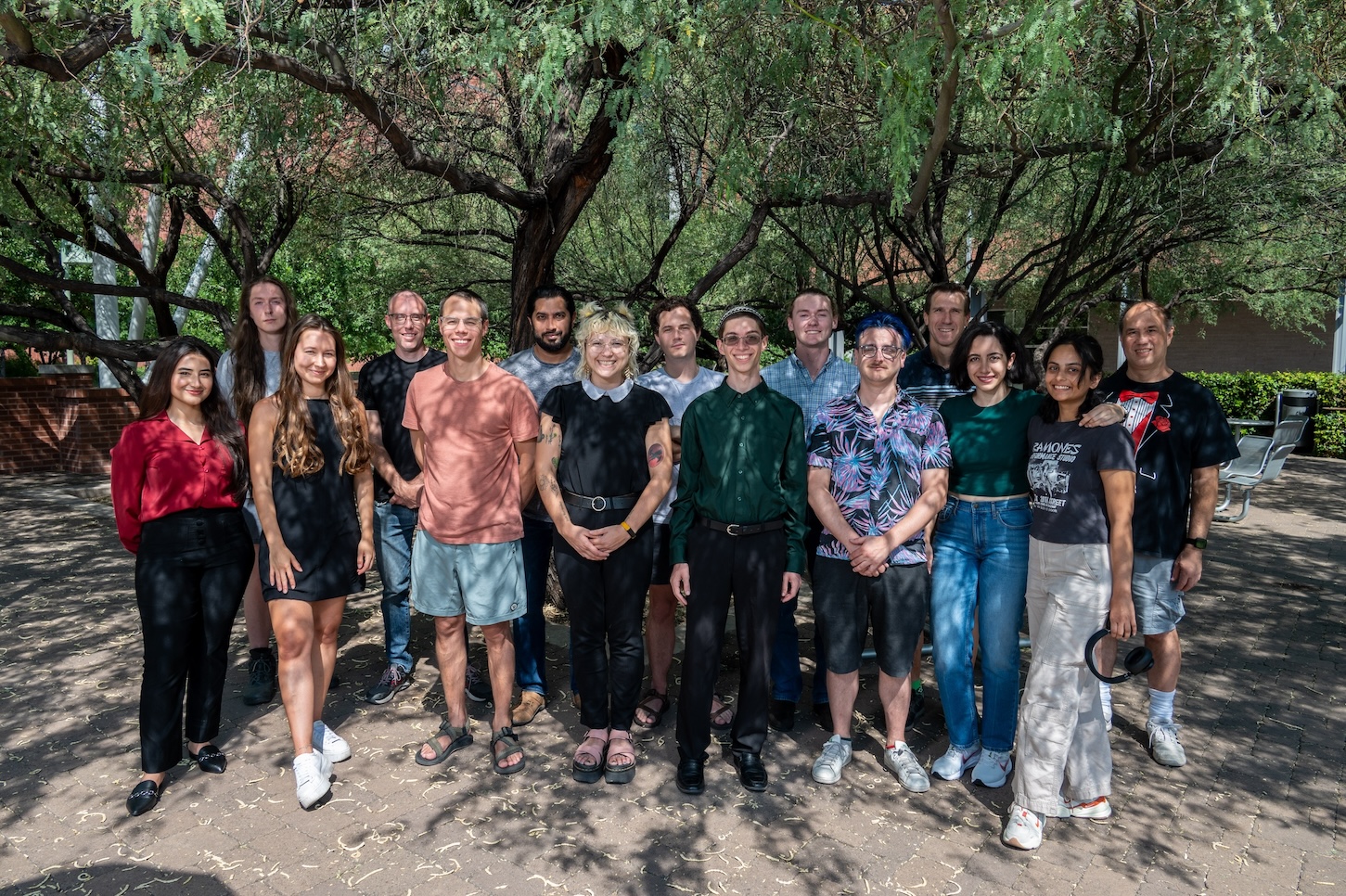Wheeler Lab





Computational Genomics, Drug Discovery, and more
The Wheeler lab designs algorithms and statistical methods for problems motivated by biological data. Projects in our group range from statistical modeling, to optimized data structures and algorithms, to low-level software optimization, to AI (Deep Learning, etc), to web services.
We are particularly focused on the annotation of biological sequences and the accompanying problem of searching for similar sequences within large-scale biological sequence databases (in the context of infectious disease, soil microbiomes, and transposable elements). Our work also touches heavily on drug discovery (AI methods and development of supporting data resources) and neuroscience (animal tracking and behavior).
We are located in the College of Pharmacy at the University of Arizona, in Tucson, which was recently named one of the best places in the world to travel (one of only 3 places in the US!). Awesome mountains, great weather, terrific research environment.
Publications
google scholar
Software
—>>>>> github <<<<<—
Simpatico (simple atomic interaction-prediction with contrastive learning)
Graph Neural Network for atomistic-level embeddings that enable accurate and hyper-fast search for seeking ligands compatable to a target protein. Gaiser, J., and Wheeler, T.J. 2025
nail (nail is an alignment inference tool)
nail is a tool for protein sequence database search that is both very fast and very sensitive. Roddy, J.R., Rich, D.H., and Wheeler, T.J. 2024
NEAR (Neural Embeddings for Amino acid Relationships)
Neural representation for very fast and highly sensitive alignment-free protein sequence search. Olson, D.R., Colligan, T., Demekas, D., and Wheeler, T.J. 2024
BATH (Protein-DNA sequence search)
Better Alignments with Translated HMMER - Frameshift Aware Traslated Hidden Markov Models for the Annotation of Protien Coding DNA. Krause, G., Shands, W., and Wheeler, T.J. 2024
sufr (A suffix array implementation in Rust) - (and the awry-FMindex library)
sufr is a tool and library for very fast, low memory construction of a suffix array on protein or nucleotide sequence. It also implements fast (and optionally low-memory) suffix array search. Youens-Clark, K., Roddy, J.R., and Wheeler, T.J. 2025
ULTRA (A tool for labeling tandemly-repetitive DNA)
A tool for locating and labeling tandemly-repetitive sequence. Olson, D. and Wheeler, T.J. 2024
DIPLOMAT (Tracking multiple animals through video recordings)
Deep learning-based Identity Preserving Labeled-Object Multi-Animal Tracking. Robinson, I., Insel, N., and Wheeler, T.J. 2023
Drugsniffer (Billion-scale virtual drug screening)
An open source workflow for virtually screening billions of molecules for binding affinity to protein targets. Venkatraman, V., Colligan, T.H., Lesica, G.T, Olson, D.R., Gaiser J., Copeland, C., and Wheeler, T.J., and Roy, A. 2022.
DISCO (Annotation of sound blocks in audio recordings)
DISCO Implements Sound Classification Obediently. Colligan, T., Irish, K., Emlen, D.J., and Wheeler, T.J. 2022
SODA (A Library for building annotation visualizations)
An Open Source Library for Visualizing Biological Sequence Annotation Roddy, J., Lesica, G., and Wheeler, T.J. 2021
AWFM-index library
A fast, AVX2-accelerated FM-index library for hyper-fast string pattern matching in nucleotide and amino sequences. Open source, C library. Anderson, T. and Wheeler, T.J. 2021
MIRAGE
A tool for splice-aware multiple sequence alignment. Nord, A. and Wheeler, T.J. 2018
HMMER webserver, and HMMER3.1
Biological sequence analysis using profile hidden Markov models. Eddy, S.R. and Wheeler, T.J. 2013
nhmmer (within HMMER3.1)
A DNA-DNA sequence homology search tool based on profile hidden Markov models, in the HMMER3 framework. Wheeler, T.J. and Eddy, S.R. 2012
Ninja
A Mesquite package for fast neighbor-joining phylogeny inference. Wheeler, T.J. and Maddison, D.R. 2010
NINJA
Software for large-scale neighbor-joining phylogeny inference. Wheeler ,T.J. 2009
Opalescent
A Mesquite package for multiple sequence alignment. Wheeler, T.J. and Maddison, D.R. 2009
Opal
Software for multiple sequence alignment by optimally aligning alignments. Wheeler, T.J. and Kececioglu. J.D. 2006
Align
A Mesquite package for aligning sequence data. Maddison, D.R., Wheeler, T.J., and Maddison, W.P. 2006
AlignAlign
Software for optimally aligning alignments. Starrett, D.M., Wheeler, T.J., and Kececioglu, J.D. 2005
cQC - cDNA Quality Control
A tool for resolving putative sequencing errors in single-pass cDNA, based on genomic sequence. Hayden, C.A. and Wheeler, T.J. 2005
Web Services and Databases
MDRepo (A database of molecular dynamics simulations)
An open repository of MD simulations for proteins, with or without ligands, generated by the worldwide community of researchers Roy, A., Ward, E., …, Wheeler, T.J. 2024-.
TE Hub (A place for TE researchers to connect to communty)
A place where researchers working on Transposable Elements (TEs) can catalog available online resources. It is organized as a collection of wiki pages, enabling community contribution and collaboration. The TE Hub Consortium, Elliott T., Heitkam T., Hubley R., Quesneville H., Suh A., Wheeler T.J. 2021-.
Dfam (A database of transposable element families)
A Database of Repetitive DNA Based on Profile Hidden Markov Models. Hubley, R. Smit, A.F.A, …, Wheeler, T.J.. 2012-.
Skylign Logo server (A place to build sequence logos)
A tool for creating informative, interactive logos representing sequence alignments and profile hidden Markov models. Wheeler, T.J., Clements, J., Finn, R.D. 2013-.
Funding
Generative AI to Predict and Drug Pathological Mitochondrial Fission
Skaggs Scholars Program
(PI: Blake Hill @ University of Colorado Anschutz, School of Pharmacy )
Excessive mitochondrial fission mediated by the FIS1-DRP1 interaction drives dysfunction in type 2 diabetes, neurodegeneration, and ischemic injury. No experimental structure of the FIS1-DRP1 complex exists, hindering rational drug design. The focus of this project is to develop a structural ensemble of the complex that will aid in drug development, using a combination of AI and molecular dynamics simulation approaches.
Computational tools for illuminating the dark matter of the human virome
NIH 1U01DE034176 (2024-2028)
(PI: Jason McDermott @ Pacific Northwest National Laboratory )
This project will help understand the impact of bacteriophage, viruses infecting bacteria, on human health by developing new computational tools to understand the function of these viruses. The results of this project could illuminate causes of diseases that are linked to the microbiome and help provide therapies for treatment of the microbiome to enhance health.
SFA-Secure Biosystems Design: Persistence Control of Engineered Functions in Complex Soil Microbiomes
DOE PerCon SFA (2023-2026)
(PI: Robert Egbert @ Pacific Northwest National Laboratory )
Collaborating across highly integrated institutions, PerCon SFA scientists are exploring how environmental niches can be sculpted using the mechanisms of genome reduction and metabolic addiction to drive secure rhizosphere community design for robust biomass cropping in challenging environments. Our group works to develop improved Machine Learning methods to recognize similarities between proteins.
Dfam: sustainable growth, curation support, and improved quality for mobile element annotation
NIH 1U24HG010136 (2018-2028)
(PI: Arian Smit, co-PI: Robert Hubley @ Institute for Systems Biology )
Most of the vertebrate genome finds its ultimate origin in transposable elements (TEs), and the thorough annotation of TEs is a critical aspect of genome annotation pipelines. The goal of the proposed effort is to develop the infrastructure of Dfam to expand to 1000s of genomes, and to establish a self-sustaining TE Data Commons dependent on limited centralized curation. We will also improve the quality of repeat annotation through development of methods for more reliable alignment adjudication, to expand approaches to visualization of this complex data type, and to improve the modeling of TE subfamilies.
Development and Maintenance of RepeatMasker and RepeatModeler
NIH R01HG002939 (2022-2027)
(Multi-PI w/: Arian Smit and Robert Hubley @ Institute for Systems Biology )
Most of the vertebrate genome finds its ultimate origin in transposable elements (TEs), and their annotation is crucial for genome sequence analysis and our understanding of TEs unrivaled impact on genome biology and evolution. Their de novo discovery and description has become a bottleneck in the genome analysis of the thousands of new species sequenced every year. In this effort, we wll make foundational changes to the way RepeatMasker adjudicates TE alignments and assigns confidence to annotations, develop two paths to improving the generation of new TE libraries through the use of multi-species genome alignments and ancestral reconstructions, along with core algorithmic changes to our RepeatModeler discovery tool.
Overcoming Combinatoric Complexity Problems in Computational Mass Spectrometry
NSF 1933305 (2022-2024)
We will develop algorithms for improved identification of peptides from tandem mass spectromentry datasets.
Past grants
Discovery of Immunogenomic Associations with Disease and Differential Risk Across Diverse Populations
NIH 1R21HL172036 (2023-2025)
(PI: Jason Karnes, @ UArizona)
Genetic variation in immune-related genes, as in the human leukocyte antigen (HLA) locus, plays a pervasive role across organ systems. HLA variation, called HLA alleles, is used to match organ donors, and has been associated with adverse drug reactions (ADRs), cancer, infections, and cardiovascular and neurologic diseases. However, most studies focus on the impact of HLA variation on specific immune-mediated diseases; the broader influence of HLA variation across all human disease has not been investigated in depth. In Aim 1, HLA alleles will be determined using whole genome sequence data, and PheWAS will be deployed in AllofUs to explore ancestral differences in HLA/phenotype associations. In Aim 2 we will develop Machine Learning strategies to explore the effect of HLA allele interactions on disease, and explore the potential for recognizing pleiotropic influences of HLA alleles.
Building Knowledge About Alternatively-spliced Dual-Coding Exons
NIH R21HG012283 (2022-2024)
The goal of this study is to catalog the tissue- and development-specific splicing patterns of dual-coding exon variants, and to computationally explore their mechanisms of control and expected functional impact.
Machine learning approaches for improved accuracy and speed in sequence annotation
NIH 1R01GM132600 (2019-2024)
Alignment of biological sequences is a key step in understanding their evolution, function, and patterns of activity. We will develop Machine Learning approaches to improve both accuracy and speed of highly-sensitive sequence alignment. To improve accuracy, we will develop methods based on both hidden Markov models and Artificial Neural Networks to reduce erroneous annotation caused by (1) the existence of low complexity and repetitive sequence and (2) the overextension of alignments of true homologs into unrelated sequence. We also address the issue of annotation speed, with development of a custom Deep Learning architecture designed to very quickly filter away large portions of candidate sequence comparisons prior to the relatively-slow sequence-alignment step.
Integrating Deep Learning Methods with Molecular Surface Properties to Improve Drug Screening
Arizona TRIF initiative (2023-2024)
Virtual drug screening will dramatically expand the diversity of explored candidate drugs, while reducing time and cost of discovery. We will extend development of AI methods to predict good drug candidates for a target protein. Models will explore billions of candidate synthesizable drugs, and will complete development of a first-in-class repository of drug interaction simulations.
Machine learning approaches for integrating multi-omics data to expand microbiome annotation
DOE DE-SC0021216 (2020-2023)
(Joint with Jason McDermott @ Pacific Northwest National Laboratory)
Communities of microbes in soil are key contributors to the plant-soil dynamic that supports production of food and fuel crops, for example driving nitrogen fixation, drought resistance, and nutrient cycling. The composition and interactions of these communities are of great importance, but these are often difficult to fully characterize due to challenges with sample acquisition, data processing, and community complexity and diversity. The effort supported by this grant will improve understanding of soil microbial communities through a combination of improved engineering for prototyped sequence annotation software, novel approaches in Deep Learning sequence annotation, and a new Bayesian method for integrating data from multiple high-throughput omics sources (particularly genomics and metabolomics).
Learning and Neural Coding of Social Expectations
NIH 1R15MH117611 (2019-2022)
(PI: Nathan Insel @ University of Montana - Psychology)
The goals of this project relate to social cognition in Degus (highly social rodents). The Wheeler lab role involves development of machine learning methods for tracking of multiple animals in video and behavior classification in those videos.
Improved protein-DNA models for translated sequence search with profile HMMs
NIH 1R15HG009570-01 (2017-2020)
Fast and sensitive sequence database search is fundamental to modern molecular biology. This proposal describes a research plan to improve the accuracy of annotation of protein-coding content in sequenced genomes and metagenomic datasets. The research builds on established sequence database search software that employs probabilistic models to increase sensitivity through greater statistical power and ability to better model family complexity. The probabilistic models are called profile hidden Markov models (profile HMMs), and the software is HMMER.
The taxonomic breadth of sequenced datasets requires methods with the power to detect remote sequence similarity; raw data and sequencing errors demand models that recognize frameshifts and splice sites; and the massive scale of datasets demands that implementations be fast. My group will develop novel models for frameshifts and splice site detection in profile HMM homology search. Direct modeling of these features within search software effectively uses homology to guide ORF/gene prediction, which in turn leads to better homology detection. Through a combination of new algorithms and application of existing approaches, these models will be fast enough to use for large-scale annotation, such as in the EMBL European Bioinformatics Metagenomics Portal.
Methods for fast bio-sequence comparison with profile hidden Markov models
P20GM103546 NIH CoBRE (2017-2020)
With the continued explosive increase in genomic and metagenomic sequencing, the community requires effective and increasingly scalable methods to more fully decode, organize, and exploit sequence data. Accurate and complete annotation of a genomic dataset, based on sequence homology, is a critical first step in understanding its content. This annotation often boils down to sequence database search – the act of searching in a large sequence dataset to find sequences that are similar to known elements.
We aim to develop methods that will substantially improve the speed of sequence comparison with profile hidden Markov models, meeting the need for methods that are fast enough to accommodate large-scale databases, while still powerful enough to detect remote sequence similarity. We will implement these methods in the HMMER codebase, focusing on three complementary target optimizations. Specifically, the aims are:
- Index-based acceleration of the key filter stage of HMMER
- Sparse completion of Forward/Backward Dynamic Programming matrix
- Acceleration with FPGA configurable hardware
Reducing false sequence annotation due to alignment overextension and repetitive sequences
P20GM103546 NIH CoBRE (2016-2017) Pilot grant
Sequence comparison is fundamental to modern molecular biology. Much effort has been expended in the development of methods to make comparison faster and more sensitive. Though the risk of false annotation is understood, the extent and key causes have only been lightly addressed. Two primary sources of false annotation are (1) the overextension of alignments of true homologs into unrelated sequence, and (2) the existence of low complexity sequence, especially when the query and target share similar patterns of repetitive sequence, such as atgatgatgatgatg (‘atg’, repeated). In our experience, these issues together cause >2% of all annotation to be incorrect, even with current strategies for avoiding the resulting errors. Furthermore, these strategies are themselves responsible for some loss in sensitivity to remote homology. This study will lay the groundwork for addressing both sources of false annotation. Specifically:
- (Alignment overextension) we will perform a survey of existing methods for mitigating overextension, and prototype two novel methods for limiting overextension.
- (Repetitive sequence) We will develop a probabilistic hidden Markov model that represents random genomic and protein sequenc